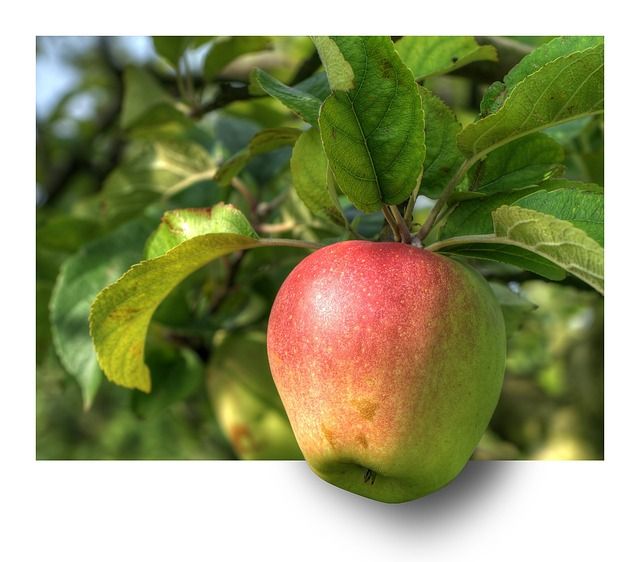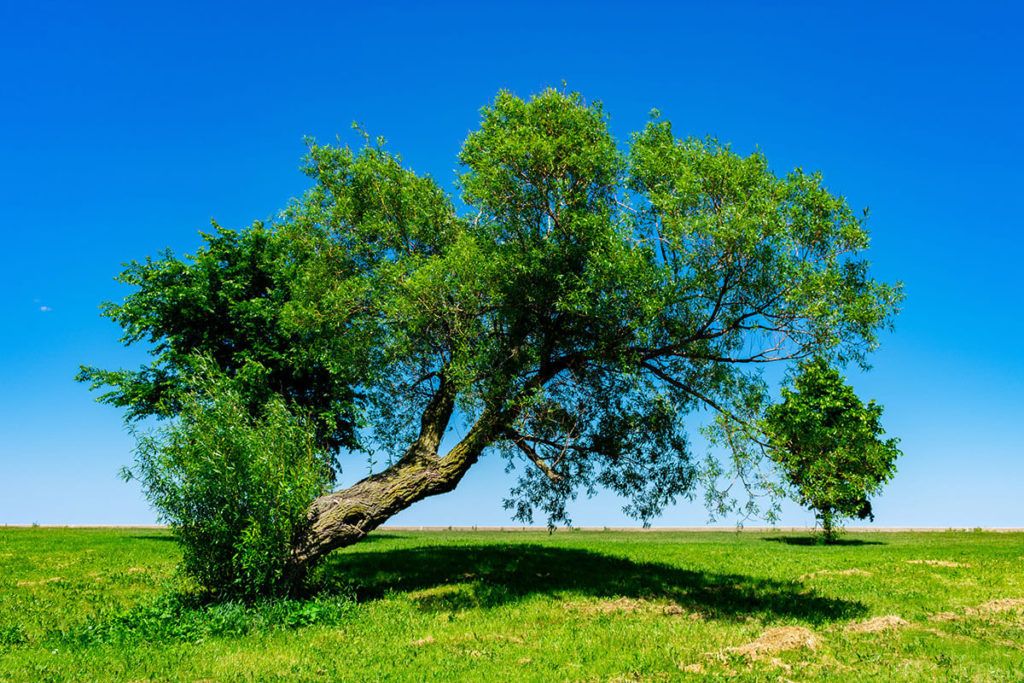Planting and Care
Arrival and Holding of Trees
Trees will arrive as 3′ to 5′ bareroot trees. You should either plant them right away or “hill” them until you are ready to plant them. They will be dormant, meaning they are basically hibernating, so they may not have any leaves.
Hilling them means to temporarily plant them in a mound of dirt. This could be in a bucket or in a hilled-up mound of topsoil outside. An easy way to do this is to fill a 2′ area of a ditch with topsoil and plant the tree’s roots in it temporarily. Since the soil will not be heavily packed down, you will need to have something that you can lean the tree on that will not allow it to fall and break.
Berry bushes will arrive in buckets or pots. So, you will simply have to protect your plants and keep them watered until planting. For a complete guide for your bushes, click the button to the right.

Where to Plant
To plant your trees, first determine the location for your trees. Although some of the trees we are offering can be planted in partial shade, which has been indicated in the descriptions for those trees, as a general rule, most fruit trees like full sun. And unless you bought your trees specifically to edge a forested area for wildlife, it is recommended that you plant any fruit tree in full sun if possible. Full sun means they will get six hours or more of sunlight per day.
The South Side – It is better to plant trees on the south side of your property because they will get more sun. But this is not a hard rule. If you can, it is better. If not, it’s still okay.
No Wet Feet – Trees do not like wet feet, so you will want to plant them in an area that is not extremely wet much of the year. In other words, you would NOT want to plant them in swampy soil.
Heavy Frost Pockets – Some of the trees we are offering are extreme northern varieties. If your planting area is down in a valley or pocket that frosts more than the average in Garrett County, you will fare better with the extreme northern varieties in that location. (See chart below).
Planting Your Tree
Digging the Hole – You will want to dig your hole bigger than your tree roots. You should gauge how much larger by whether you need to amend your soil.
Amending – If you have a heavy clay soil, you will want to amend the soil by digging a bigger hole than you need and filling it with a mix of mulch, compost, and some sand. This will allow the soil to drain better while still holding moisture. The optimal soil for trees is a mix of clay, sand, and silt. So, if you have too much of one, you can amend it accordingly.
IMPORTANT: Your tree has been grafted onto a rootstalk that helps make the tree resistant to some diseases and also helps reduce the size of your tree from what would be a Standard Size tree. There will be a little bump around the base of the tree where the stem has grown onto the rootstalk. DO NOT PLANT THE TREE BELOW THAT BUMP. All dirt will need to rest below the rootstalk grafting bump, so you should clearly see it above ground once the tree is planted. If you cover the graft area, it is possible that your tree will set roots above the graft. If that happens, the tree will take on the characteristics of the parent tree. What does that mean? It means your semi dwarf tree that was supposed to be 10′ tall may end up growing to 30′ tall, and it may not have as much disease resistance.
Soak – Before planting, soak the tree roots in a bucket of cold water for about an hour. Then, place the tree in the hole. Put any amendments in the hole. Fill the hole with dirt and pack it down firmly around the tree, making sure you see that grafting bump above the ground.
Water – It is suggested that you pour several gallons of water around the base of your newly planted tree. This will help the roots to stay moist while growing into the soil.
Fruit Tree Hardiness Zones
Extreme Northern Varieties:
- Albemarle Pippin Apple – zone 4
- Yellow Transparent Apple – zone 4
- Fuji Apple – zone 4
- Ruby Rush Apple – zone 4b
- Montmorency Cherry – zone 4
- Castleton Plum – zone 4
- Long John Plum – zone 4
Zone 5 Trees
- Autumn Crisp Apple
- Crimson Crisp Apple
- GoldRush Apple
- Bartlett Pear
- Potomac Pear

What could happen if you do not stake your trees.
Staking and Protecting from Deer
Stake – You will want to stake your trees to keep them in place until their roots grow, and to keep wind from blowing them out of alignment. We recommend a 3-point staking system. Watch the video to the left to learn more.
Tree Tube – You will also want to put a tree tube on your tree. This will keep rabbits and small animals from chewing on it. We recommend that the tube come up to the bottom of the branches. Some tubes will expand with the tree as it grows, but you MUST take it off and clean it twice a year and make sure that it is not growing into the tree.
Wire – If you have a problem with deer, you will want to put chicken wire around your tree. Watch the video below for details.
The Trees We Offer Ripen at the Following Times
- Yellow Transparent Apple – late July to early August
- Autumn Crisp Apple – early September
- Crimson Crisp Apple – late September to October
- Albemarle Pippin Apple – late October
- Ruby Rush Apple – late October to November
- GoldRush Apple – late October to November
- Fuji Apple – late November to December